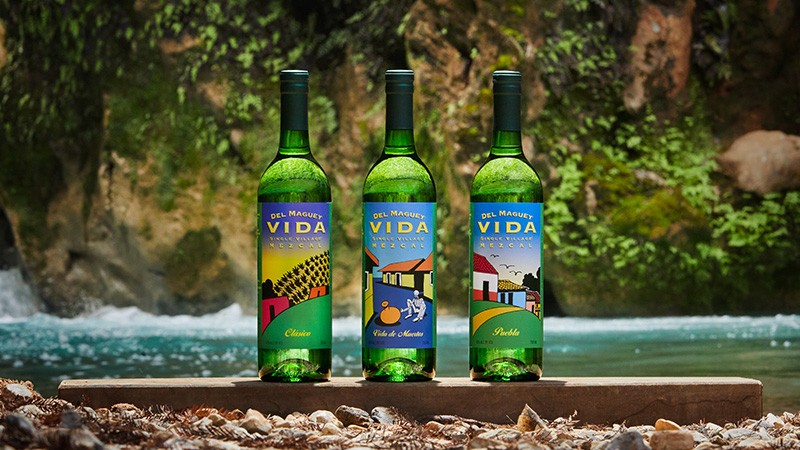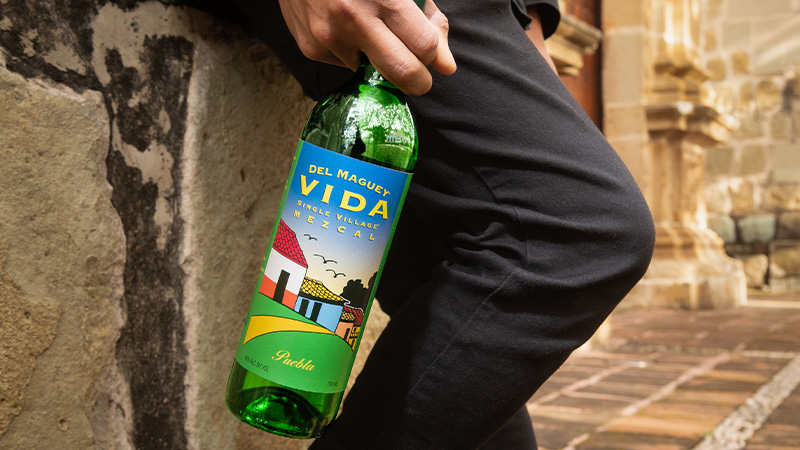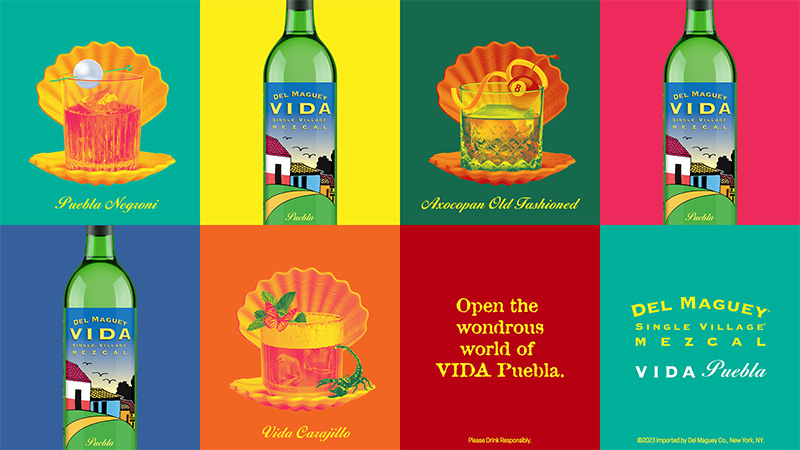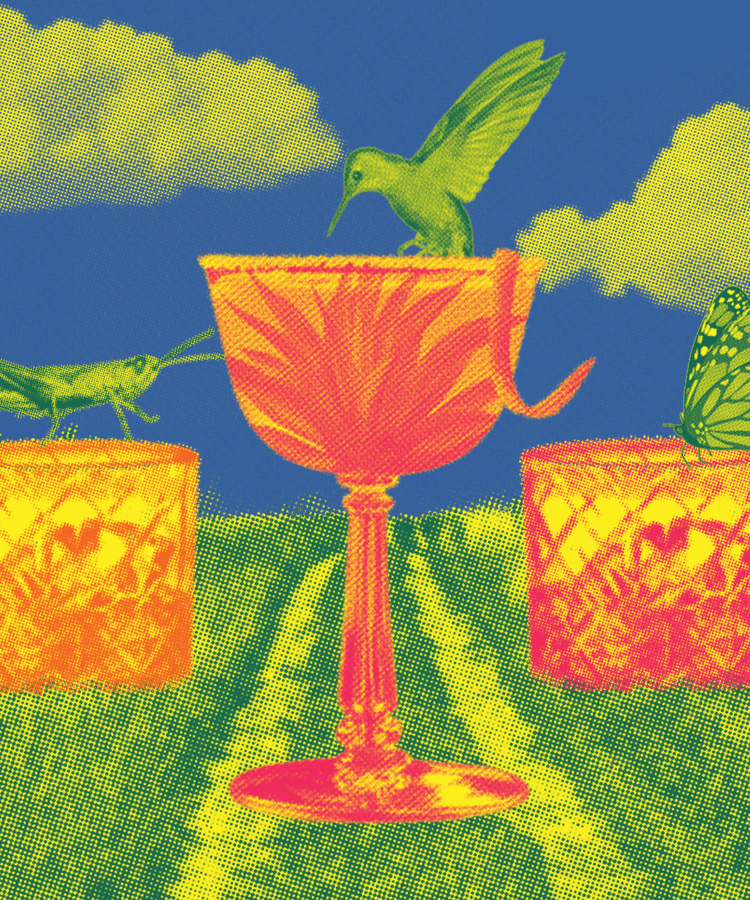
When Ron Cooper, the founder of Del Maguey Single Village Mezcal, first arrived in Oaxaca, Mexico, in 1970, he was on an odyssey. Cooper, an acclaimed visual artist and sculptor, had driven to the far-flung city from Los Angeles on a dare. The city, brimming with Indigenous artisans, fed his creative spirit; expert weavers transformed wool into intricate textiles, potters molded red and black clay into works of art, and vibrant alebrijes sculptures sprung up like wildflowers among the rocky vistas.
But there was one art form that had a profound impact on him, one that would eventually irrevocably shift the spirits landscape: mezcal. Cooper’s curiosity about the spirit led him down dirt roads where, according to his book “Finding Mezcal: A Journey into the Liquid Soul of Mexico,” he’d ask lonesome travelers, the woman selling tortillas on the street, anyone he came across, “Dondé está el mejor?” Where is the best? before following their pointed finger to the palenques — open-air mezcal distilleries — scattered in the wilds of Oaxaca.
Cooper was enamored by the “liquid art” that Indigenous people had been distilling for hundreds of years, so he decided to bring it stateside in 1995 with the launch of Del Maguey. Today, it’s hard to imagine a world without mezcal; agave-based spirits are quickly becoming the most popular in the country. But back then, knowledge of mezcal outside of Mexico was rare.
The Del Maguey Difference

“In the beginning, and for a long time, Del Maguey was a very small operation,” Éva Pelczer, the global education manager for Pernod Ricard, says. “The idea [of Del Maguey] is to bring this liquid art form, this 400-year-old culture, to a global audience completely intact.”
The key to doing that, according to Pelczer, is Del Maguey’s emphasis on single-village mezcal. The company works with Oaxacan families and families from Puebla, each with their own distinctive way of producing the spirit based on their Indigenous traditions and village microclimates, which result in what Del Maguey calls “the hand of the maker.”
From Chichicapa, a naturally fermented and twice distilled mezcal with a palate of dried fruit and almond, to Papalote & Pizorra, which boasts flavors of tropical citrus and pear skin, each bottle of Del Maguey expresses a distinctive sense of terroir. Today, the idea of sipping a mezcal neat isn’t so extraordinary. In fact, traditionally, it was sipped neat as a ritual beverage in Mexico for over 400 years. But back when the company was founded, it was relatively unheard of in circles outside of Mexico.
“In Del Maguey’s almost 30 years, we’ve seen Del Maguey completely evolve,” Pelczer says. “High-proof spirits that you sip neat just don’t move that quickly. On top of that, into the early aughts, most people outside of Mexico didn’t have any context or appreciation for what traditional mezcal was. The reason that Del Maguey started to reach a global audience is because of Del Maguey VIDA Clásico, which was originally known simply as VIDA.”
Handcrafted in the San Luis Del Rio village of Oaxaca, Del Maguey VIDA Clásico offers flavors of tropical fruit, honey, ginger, cinnamon, and tangerine. The first mezcal produced to go specifically in cocktails, it debuted in 2010 and opened the door to the artisanal mezcal category for a bigger audience in the U.S. Thanks to VIDA Clásico’s success, Del Maguey became a fixture on back bars everywhere. It helped bring more people into the category, more brands started focusing on mezcal, and that laid the foundation for worldwide growth.
A New Chapter: Del Maguey VIDA Puebla

For the mezcal-curious, it can be an intimidating category. Del Maguey’s newest launch, VIDA Puebla, serves as an introduction to the spirit and rounds out what is now known as the VIDA Collection in the Del Maguey portfolio. With a softer taste and an approachable 40 percent ABV, VIDA Puebla is made with newcomers in mind.
“If we were going to make a 40 percent ABV mezcal, it was going to be the best 40 percent ABV mezcal out there,” Pelczer says. For Del Maguey, that means artisanal production, wild fermentation, and copper pot still distillation, among other things. “With VIDA Puebla, we’re incorporating the production style of San Luis del Rio and bringing it to a facility that’s able to scale the volume of production into the future. With this setup, VIDA Puebla gives us the opportunity to build a key bridge to the new-to-mezcal consumer,” Pelczer says.
Why Bartenders Love Del Maguey

Since VIDA Clásico spearheaded the mezcal movement in the U.S., many bartenders return to it and other Del Maguey expressions repeatedly. Such is the case with Michael Aredes, a New York bartender known for his adventurous cocktail recipes.
“Del Maguey exposed me to a deeper view of what Mexico offers in its rich history and culture of food and beverage. It showcases that, like with wine, time, terroir, and the hands that create mezcal greatly influence the final result,” he says.
His advice for someone who is new to the category? Start slow. “Take small sips — which is hard for many as people usually haven’t taken the time to sip any high-proof spirit in the past — and take the time to understand the different flavors,” he says.
That conversation could help demystify mezcal, casting aside its more daunting attributes. “The smoke that most people automatically associate with the category can be scary and off-putting. It was also to me at the beginning of my education,” Aredes says. When it comes to VIDA Puebla, Aredes commends its flavor profile.
“On the nose, I get super light smoke with notes of dried sage, mint, and basil, kind of like the feeling you’d get when walking into a botánica. On the palate, it’s like, ‘Hello, pyrazines!’ All kinds of roasted green veggie notes. Think bell pepper, asparagus, poblano peppers, and a really pretty sprinkle of florals and white pepper — a little more delicate while still offering an interestingly creamy body.”
Aredes easily envisions VIDA Puebla right at home in a mezcal Margarita, built into a stirred drink, or playing well within a split-base tropical cocktail.
For Michael “Paco” Stanley, a Chicago-based bartender of nearly a decade, Del Maguey’s Chichicapa was the first mezcal he ever tried. “Throughout my beverage career, Del Maguey has always been a constant on back bars, and, of course, VIDA has been a constant in cocktails,” he says.
The iconic green bottle and distinctive artwork — all done by the late artist Ken Price, a close friend of the founder — never fail to draw a guest’s eye, according to Stanley. Besides the eye-catching bottle, he appreciates Del Maguey’s vast amount of expressions. “It has so many options for novice mezcal drinkers or big agave heads who want to dig into some rare agaves,” he says.
VIDA Puebla, he notes, is the perfect entry-level mezcal. “It’s great for someone wanting to try a Mezcal neat pour, and it works amazingly in cocktails. I frequently give it to bar guests looking for their first taste of mezcal.”
His favorite way to use it is in place of gin in a Last Word. One of his favorite classic cocktails, the VIDA Puebla lends itself perfectly to the Green Chartreuse and Maraschino liqueur.
Melina “Mel” Meza, a first-generation Mexican-American, has worked behind the bar for over 12 years. Like Stanley, her first mezcal was Del Maguey. “Del Maguey VIDA remains my go-to when making cocktails at home and enjoying cocktails at a bar,” she says. “I truly admire that each expression really highlights the mezcal in such a unique way by telling a story, a story about the remote Indigenous villages where it was produced and the palenqueros they collaborate with.”
Meza agrees that VIDA Puebla embodies approachability, noting that its earthy qualities create a wonderful juxtaposition with its floral and tropical notes. “It’s like a chameleon mezcal, easily adaptable for all palates,” she says. For mezcal newbies, she recommends incorporating it into a familiar classic cocktail.
“Sometimes keeping it simple with fresh, classic ingredients is the way to go, especially for novice mezcal drinkers.”
The Mezcal Journey
No matter where you’re at on your mezcal odyssey, trust that there are no wrong turns.
“The culture of how we drink traditional mezcal is not universal,” Pelczer says. “That is one of the most beautiful things about it. With mezcal, you open the door to this specific tradition, this specific artisanship. Most people don’t speak that language, literally and figuratively. Most people, especially in the U.S., do speak the language of cocktails. That’s the language that VIDA Puebla and VIDA Clásico speak. It’s the idea that it’s the stepping stone, the bridge, the door opener into a portfolio of complexities.”
Take the first step by trying one of the cocktails below.
Try Michael Aredes’s Del Maguey VIDA Puebla Cocktail
The Refresco Al Pastor
Ingredients:
- 1 ¼ ounces Del Maguey VIDA Puebla
- ¾ ounce Mommenpop Meyer LemonPOP Aperitif
- ¼ ounce Giffard Caribbean Pineapple Liqueur
- ¼ ounce Ancho Reyes Verde Poblano Liqueur
- 1 dropper saline solution
- 2 dashes orange bitters
- Garnish: Charred fresh pineapple on a silver metal pick and expressed burned lemon peel, discarded.
Instructions:
- Stir all liquid ingredients in a chilled mixing glass to temperature.
- Pour liquid into a chilled Nick & Nora or coupe glass.
- Garnish with skewered charred fresh pineapple and expressed burned lemon peel.
Try Michael ‘Paco’ Stanley’s VIDA Puebla Cocktail
The Neon Moon
Ingredients:
- 1 ½ ounces Del Maguey VIDA Puebla
- ½ ounce Misoo aperitivo
- ¾ ounce lime juice
- ¾ ounce passion fruit syrup
Instructions:
- Put all ingredients into a cocktail shaker.
- Shake hard for about 10 seconds.
- Strain into a rocks glass and top with fresh ice.
Try Melanie ‘Mel’ Meza’s VIDA Puebla Cocktail
The Emerald Sunrise
Ingredients:
- 2 ounces Del Maguey VIDA Puebla
- ¾ ounce green apple and pepita orgeat*
- ¾ ounce cucumber juice
- 1 ounce lemon juice
- Garnish: cucumber slices and fresh mint
Instructions:
- Combine all ingredients in a cocktail shaker and shake vigorously for 10 seconds.
- Strain over fresh ice into a rocks glass.
- Garnish with two cucumber slices and a bouquet of fresh mint (or herb of choice).
*How to Make Green Apple and Pepita Orgeat
Ingredients:
- 4 ounces roasted pepitas
- 8 ounces hot water
- 8 ounces sugar
- 8 ounces green apple purée
Instructions:
- Blend 4 ounces roasted pepitas with 8 ounces hot water for 5 seconds
- Add 8 ounces of sugar, pouring into blender slowly.
- Strain out pepitas.
- Stir in 8 ounces of green apple purée and 8 ounces of sugar
- Mix thoroughly and enjoy.
*How to Make Roasted Pepitas
Ingredients:
- 2 cups pepitas
- 1 teaspoon olive oil
- 1 teaspoon salt
Instructions:
- In a bowl, toss two cups of pepitas with 1 teaspoon of olive oil and 1 teaspoon of salt until fully coated.
- Spread pepitas onto a lined baking sheet and roast for 10 minutes at 350 degrees.
This article is sponsored by Del Maguey.
